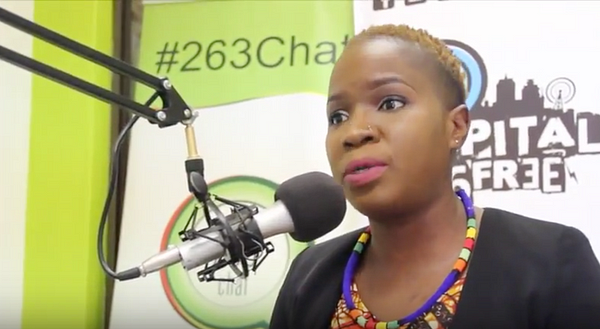August 7, 2017
Taking the internet off the internet to reach offline audiences

263Chat videos cover urban and rural Zimbabwe. This screenshot is from one about bringing technology to agricultural villages
By Madeleine Bair
If news innovation is understood through the lens of digital technology, who is left behind? What opportunities are missed, what audiences are neglected, and whose voices and stories are left out?
That question has plagued Nigel Mugamu. Nigel is the founder of 263Chat, a media outlet that uses Twitter conversations, WhatsApp groups, and videos to engage Zimbabweans in conversations about national affairs. The outlet, founded in 2012, has more than 200 thousand Twitter followers, and Nigel has won several awards for entrepreneurship and innovation. But while the news company has grown, Nigel is conscious of the fact that a large fraction of the country will never check out his website or take part in Twitter chats. That’s because a majority of Zimbabweans live in the countryside, and most of them have limited to no internet access.
I met Nigel at the Stockholm Internet Forum earlier this year, which brought together human rights activists, journalists, and internet freedom activists around the theme of Access & Power. During the closing plenary, Nigel posed this challenge to the group: Considering how many people are offline, how might we “find a way to bring the internet off the internet for those who have no access.
#SIF17 lesson: find a way to take the internet off the internet for those who have no access while we wait for infrastructure – @SirNige pic.twitter.com/mvAjq8Rdf9
— Farrukh Naeem Qadri (@FarrukhNaeem) May 18, 2017
This resonated with me. While the digital divide is not nearly as stark in the U.S. as it is in Zimbabwe, internet use is very different across socio-economic, generational, and ethnic divides. I know plenty of people in their 60s and 70s who have internet access but prefer to read their paper in print because it’s been a part of their routine for decades. Some working-class news consumers have limited cellphone data and are less likely to stream videos or download news apps on their phones. And in rural and immigrant communities, many people rely primarily on offline social networks for news and information.
What sorts of innovative distribution strategies will more effectively reach those audiences?
DVD and WhatsApp distribution to engage with rural Zimbabwe
I caught up later with Nigel to ask him how he’s working to “take the internet off the internet.” Speaking via WhatsApp from his home in Harare, he explained to me that even for the minority of Zimbabweans who have internet access, that access can be severely limited.
“For some people, Facebook is the internet. For some people, WhatsApp is the internet.”
For many Zimbabweans, especially the 60 percent of the population that lives in the countryside, the Twitter chats and online articles produced by 263Chat, not to mention their YouTube videos, will never reach them. “A lot of times,” he said, “marginalized communities are missing out on conversations that influence and affect them.” He realized he needed to go to where those communities are.

This year, he’s experimenting with ways to do just that. “One of the things we identified: we’re a radio nation. And so what we did was partner with one of the national radio stations here.” The station needs good content, and 263Chat needs to reach their audiences. “So we’re in the process of making more audio content to be played on the radio.”
Another technology popular in Zimbabwe is DVDs. Street vendors hawk copies of the latest movies and television shows, which buyers can watch, trade with friends, and recirculate. 263Chat produces plenty of videos for their website and social media, but now the team is thinking, “why don’t we put these on a DVD and hand them out in the city?” For now, it’s just an idea, but Nigel has a vision of DVDs containing a series of short videos on news, culture, and public affairs, sponsored by advertisements, distributed on the streets, and delivered on motorbikes to rural villages.
Finally, Nigel is thinking through how mobile content can circulate through a community that lacks internet access. By sharing information on WhatsApp via an image or an entire article, rather than a link to an online report, that information can then be spread via SMS or simply shared in person. “For people who don’t have access, someone in the community has a smartphone, and sometime during the week, that person congregates and shares it with others.” Think of it as the 21st century version of leaving a newspaper on the bus.
In the next few weeks I’ll be sharing other examples of low-tech innovation designed to reach marginalized communities, and I’d love to hear from you. How has digital-first innovation left offline audiences behind? What other ways do news publishers and consumers “take the internet off the internet” and distribute it to offline communities? Chime in with a comment to share your thoughts on my Medium post or tweet me @madbair.
This piece was originally published on Medium by Madeleine Bair, and republished with permission.
 Madeleine Bair is an award-winning journalist and filmmaker, and an expert on human rights video advocacy, verification of online footage, and citizen video.
Madeleine Bair is an award-winning journalist and filmmaker, and an expert on human rights video advocacy, verification of online footage, and citizen video.













